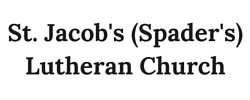Facing Our Own Transfigurations
The sermon text is Matthew 17:1-9. Pastor Jim Kniseley presented this sermon at Trinity and St. Jacob’s Lutheran Churches on February 26, 2017, The Transfiguration of our Lord.
Dear Friends in Christ,
Today we hear again about a signal event in the ministry of Jesus when a transfiguration occurred. The idea of something being changed is in that word transfigured. What the disciples saw with their eyes was Jesus changing from his earthly appearance to his heavenly appearance. What they heard from Jesus on that mountain-top would change their lives from that day forward.
Jesus chose Peter, James and John to accompany him on his journey to the top of the mountain that day. These three served as his leadership team, his cabinet. He wanted them above all others to see and experience something out of the ordinary so that they would understand and at the right time tell others.
You know the story. Up on the mountain top Jesus is transfigured. His face is suddenly shining like the sun and his clothing becomes dazzling white. Two old testament figures appear with him, Moses and Elijah.
Who is the audience on this occasion? Why is this happening? The audience consists of three people: Peter, James and John. Everything they’ve ever been taught about God and heaven and Moses and Elijah unfolds before them. Remember, when Moses came down from Mt. Sinai, his face glowed. Remember, heavenly figures always are dressed in white, often dazzling white. Remember, Elijah, the great prophet, was himself taken to heaven in a chariot with great fanfare.
Then comes the icing on the cake, the best part. A cloud comes over them all (remember the cloud signaled the presence of God for the Israelites of old in the wilderness) and God speaks:
This is my Son, whom I love; with him I am well pleased. Listen to him!
Yes, those words were spoken by God before at Jesus’ baptism, but we think that Jesus only heard those words. This time the three disciples get to hear God speak.
The first response to all this taking place comes from Peter. He wants to build 3 booths here. Three temporary dwellings or monuments, to capture the memory of what they’ve seen and experienced.
As they are coming down the mountain, Jesus instructs them:
Don’t tell anyone what you have seen, until the Son of Man has been raised
from the dead.
Most Bible scholars believe that Jesus is really telling them to wait until they have experienced all of Jesus’ earthly mission, and that will include his death and resurrection, and then they should proclaim everything, including what they saw and heard at the Transfiguration.
So, friends in Christ, what does the Transfiguration have to do with you and me? I would be so remiss as the preacher today if I did not also speak about the transfigurations that are now occurring at St. Jacobs and Trinity. If the essence of transfiguration is change, would you agree that change can be very difficult to accept, even if it’s needed? Change can rock our world, and sometimes it takes an earthquake or a heavenly appearance to get our attention. Change demands doing things differently and often times change happens before we are ready for it.
Peter is a big help for us today. He is impulsive by nature and his actions are usually so large that he is easily remembered by all the gospel writers. I suspect that Peter is caught in that tension between wanting things to stay the same and knowing that change is about to happen.
Peter might have chosen to stay on that mountain, savoring for years what he had experienced. But that is not what God had in mind. It is Jesus who gives them their marching orders and leads them down the mountain and into the everyday world.
It is interesting to me that this gospel story of the Transfiguration comes at the same time that we are engaging in our transition forums. I did not plan it this way. This is a God-thing and I simply observe how God quietly works. We are facing change around here and we want to be asking “God, what is the next step? What is the direction you want us to take? Help us to change our hearts and minds where needed, in order to welcome the next settled pastor you will send, and help us to enter into the renewed mission for our congregation that you have in mind.”
Change, by definition, is a simultaneous holding on of what was and a looking toward the hope of what can be. I like how Martin Luther put it: We are not yet what we shall be.
So, have you had your transfiguration moments in your life? A moment when you knew that change has to happen but you are not yet ready?
This final thought: Transfiguration is not so much about the glory, but it’s the sense that change is necessary but hard to accept. Change matters are the very essence of our faith.
Change our hearts, O Lord, and make us ready. Amen!
